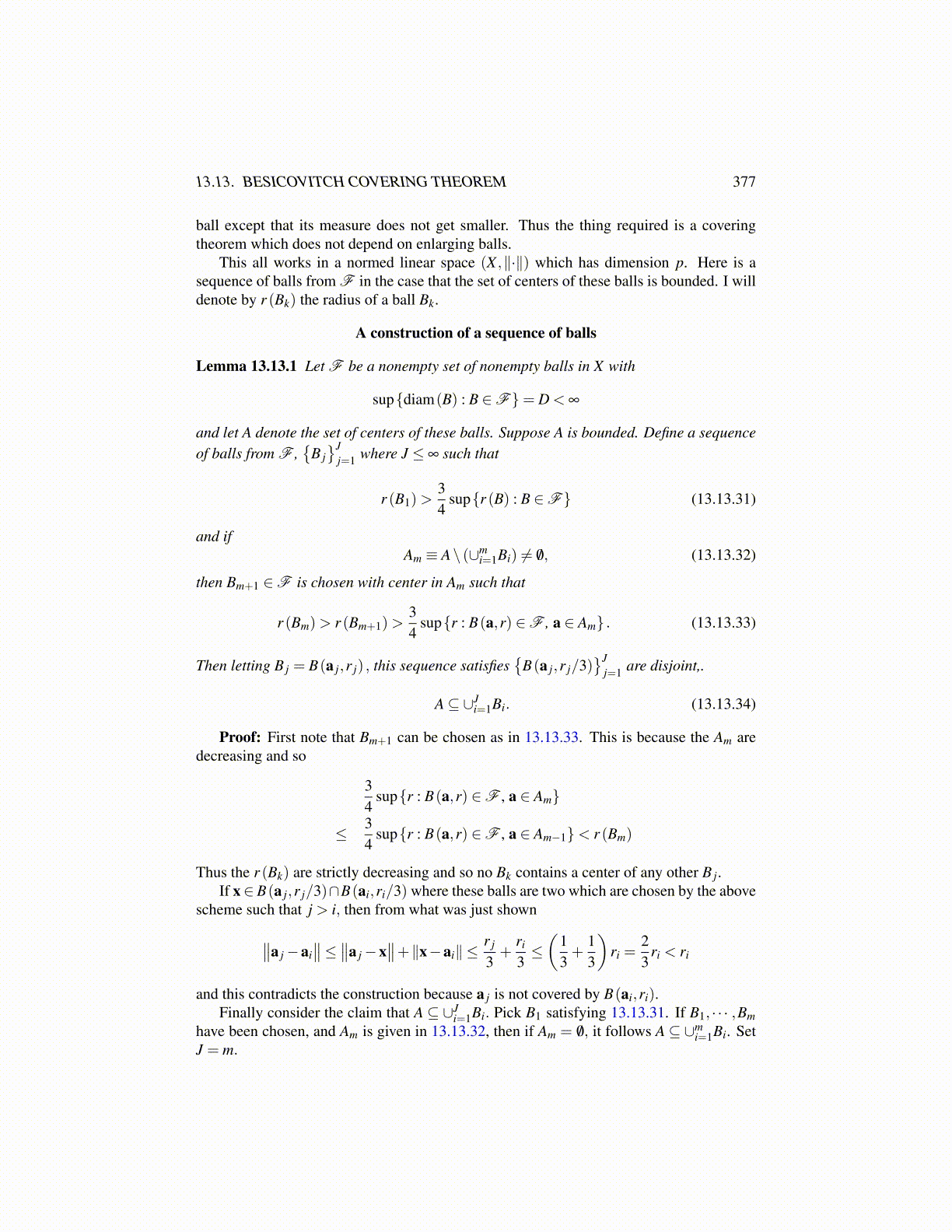
13.13. BESICOVITCH COVERING THEOREM 377
ball except that its measure does not get smaller. Thus the thing required is a coveringtheorem which does not depend on enlarging balls.
This all works in a normed linear space (X ,∥·∥) which has dimension p. Here is asequence of balls from F in the case that the set of centers of these balls is bounded. I willdenote by r (Bk) the radius of a ball Bk.
A construction of a sequence of balls
Lemma 13.13.1 Let F be a nonempty set of nonempty balls in X with
sup{diam(B) : B ∈F}= D < ∞
and let A denote the set of centers of these balls. Suppose A is bounded. Define a sequenceof balls from F ,
{B j}J
j=1 where J ≤ ∞ such that
r (B1)>34
sup{r (B) : B ∈F} (13.13.31)
and ifAm ≡ A\ (∪m
i=1Bi) ̸= /0, (13.13.32)
then Bm+1 ∈F is chosen with center in Am such that
r (Bm)> r (Bm+1)>34
sup{r : B(a,r) ∈F , a ∈ Am} . (13.13.33)
Then letting B j = B(a j,r j) , this sequence satisfies{
B(a j,r j/3)}J
j=1 are disjoint,.
A⊆ ∪Ji=1Bi. (13.13.34)
Proof: First note that Bm+1 can be chosen as in 13.13.33. This is because the Am aredecreasing and so
34
sup{r : B(a,r) ∈F , a ∈ Am}
≤ 34
sup{r : B(a,r) ∈F , a ∈ Am−1}< r (Bm)
Thus the r (Bk) are strictly decreasing and so no Bk contains a center of any other B j.If x∈ B(a j,r j/3)∩B(ai,ri/3) where these balls are two which are chosen by the above
scheme such that j > i, then from what was just shown∥∥a j−ai∥∥≤ ∥∥a j−x
∥∥+∥x−ai∥ ≤r j
3+
ri
3≤(
13+
13
)ri =
23
ri < ri
and this contradicts the construction because a j is not covered by B(ai,ri).Finally consider the claim that A ⊆ ∪J
i=1Bi. Pick B1 satisfying 13.13.31. If B1, · · · ,Bmhave been chosen, and Am is given in 13.13.32, then if Am = /0, it follows A⊆ ∪m
i=1Bi. SetJ = m.